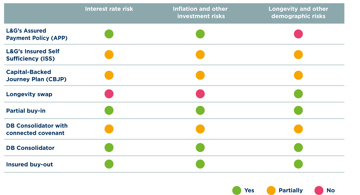How corporates should manage their pension schemes in tough times

Now more than ever, it is a tricky balancing act for corporate sponsors to ensure members get their benefits paid in full whilst also making sure other stakeholders’ interests are protected. With the impact of the economic fallout from the pandemic unclear, how should corporate pensions be managed in the current environment? In this blog, I look at how corporates should approach their pension strategy in 2021.
Covid-19 fallout and the endgame
Before the pandemic hit, the direction of travel from the Pensions Regulator (TPR) and the Pension Schemes Bill all pointed to schemes de-risking more quickly and seeking additional support from sponsors to plug shortfalls even faster. While that was of course all put on pause back in March and is still up in the air, asset values have mostly recovered from their low point and the disruption [caused by ongoing covid restrictions] is now being seen by some as a new normal. TPR has recently confirmed that they believe the key principles they set out in their funding consultation remain relevant and, against that background, I think it’s important that sponsors engage on the pensions strategy to ensure their objectives drive the “end game”, and the best route to get there.
I was pleased to read the recent IFoA paper urging trustees, sponsors and advisors to think hard now about the end game. This is an area that can appear increasingly overwhelming because of the evolving regulations and the wide range of welcome innovations. De-risking or transferring liabilities to an insurer were previously the only end-games in play. Now we are seeing the emergence not only of DB superfunds but new products and capital backed solutions which can act as an end game of some form, or help a pension scheme’s journey to the end game. Our table below lists the various different options and indicates to what extent they address the key risks. We considered these options in further detail in our Shifting Sands report.

The most appropriate end point and journey to reach that point will depend on many factors specific to each scheme and sponsor. So it’s important to assess all options now and then tailor the journey, rather than assuming that a traditional de-risking route leading to an insured buy-out is the only solution.
New Year, new scheme approach
Of course, to get to the endgame successfully you need to make sure that the journey to get there is properly planned. With the Pensions Schemes Act 2021 set to become law any day and the updated TPR guidance expected later this year, 2021 is the year for companies to make resolutions on their approach to pensions.
I have three tips for every company which are:
-
Review your long-term strategy
For many this will still be to buy out the scheme but as we show above there are a range of emerging options. Having a documented plan will help assess the relative merits of any project or product. Given the market volatility of 2020, and the upcoming legislative changes, now is the right time to assess whether the strategy remains appropriate or needs adjustment to improve the scheme’s position ahead of the new funding regime. -
Take a proactive involvement in the investment strategy
Sponsors have more interest than ever in risk, expected return and cost reduction and so need to be proactive to get traction with trustees -
Prioritise projects
Once a clear plan is in place, projects should be undertaken with a focus on improving the risk-adjusted outcome for the company and its shareholders against that plan. Focus on these projects to ensure you get the most bang for your buck, aligned with clear objectives.
With economic uncertainty set to continue well into this year, taking the time now to think and plan will reap benefits and ensure that your scheme is sustainable and better able to withstand the many pressures.
You can read more in LCP’s Shifting Sands report here.

